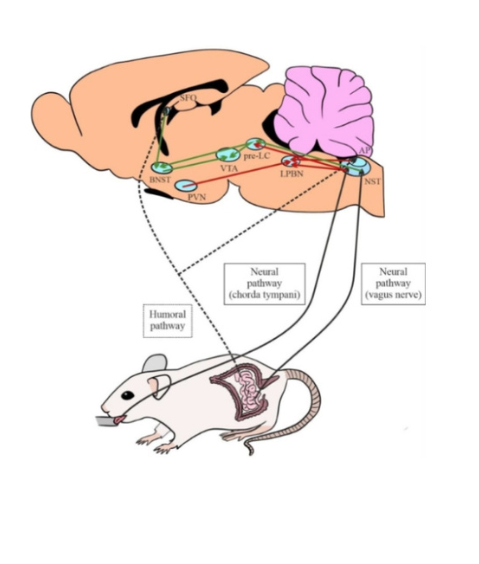
Antonio Bernal, María A. Zafra, María J. Simón and Javier Mahía, CIMCYC researchers, published a review in “Nutrients” of the neurobiological mechanisms that regulate sodium homeostasis in the body.
This review addressed the NaCl intake process (behavioral mechanism) and the neural and humoral pathways that transmit information to the central nervous system (CNS). It examined the brain circuits that monitor Na balance and stimulate or inhibit NaCl intake. Finally, the process of renal Na excretion is described (physiological mechanism).
Sodium is essential for life, and its regulation depends on the balance between its intake (behavioral response) and its loss, mainly controlled by the kidney (physiological response). In this study, a comprehensive analysis of the sodium ion's journey through the organism is performed, describing in detail the neurobiological ingestive and excretory mechanisms that regulate its homeostasis. This is crucial to understanding specific diseases (e.g., hypertension, psychogenic polydipsia, cerebral salt loss, etc.).
From the tongue and digestive system, ingested salt is processed by fast (neural) pathways, which project to the nucleus of the solitary tract in the brainstem, and slower pathways (blood and cerebrospinal fluid) to circumventricular organs such as the subfornical organ or the area postrema. These brain structures are part of circuits that include the hypothalamus (e.g., Tubromammillary system) and limbic regions, and they have a dual purpose. The first is behavioral, stimulating and inhibiting salt intake. The second, physiological, is responsible for its excretion or renal retention. Through them, the levels of this ion are maintained within a narrow range of values necessary for the organism's survival.
This work was funded in part by the Spanish Ministry of Economy, Industry and Competitiveness (PSI 2017-89324-C2-1-P) and APC of the University of Granada.
- Bernal, A., Zafra, MA., Simón, MJ., Mahía, J. Sodium Homeostasis, a balance necessary for life. Nutrients 2023, 15, 395. doi: 10.3390/nu15020395

